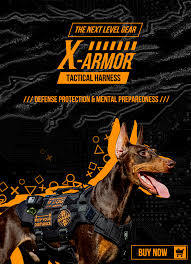The Benefits of Using Dog Crates
Dog crates are versatile tools that can benefit both you and your furry friend in various ways. While some may view crates as confinement, when used correctly, they can provide a safe and comfortable space for your dog. Here are some benefits of using dog crates:
Safety and Security
A crate can serve as a safe haven for your dog, especially when you’re not around to supervise. It keeps them out of harm’s way and prevents them from getting into potentially dangerous situations.
Training Aid
Crates are valuable tools for house training puppies or teaching dogs basic obedience commands. Dogs have a natural instinct to keep their den clean, so a crate can help reinforce good potty habits.
Travel Companion
When traveling with your dog, a crate provides a secure and familiar environment for them. It helps reduce anxiety and ensures their safety during car rides or flights.
Managing Behavior
A crate can help manage destructive behavior in dogs by giving them a designated space to relax and unwind. It also helps prevent separation anxiety by providing a sense of security.
Comfort Zone
Dogs often see their crates as cozy retreats where they can relax and nap undisturbed. Having a designated space can help reduce stress levels and promote better sleep quality.
In conclusion, dog crates offer numerous benefits that contribute to the overall well-being of your pet. When introduced properly and used appropriately, crates can become a positive part of your dog’s routine, providing them with comfort, security, and structure.
7 Benefits of Using Dog Crates for Your Furry Friend
- Provides a safe and secure space for your dog
- Aids in house training and behavior management
- Helps reduce anxiety during travel or vet visits
- Gives dogs a designated comfort zone to relax
- Prevents destructive behavior when unsupervised
- Offers a sense of security and routine for your pet
- Can be used as a tool for obedience training
Potential Drawbacks of Using Dog Crates
- Some dogs may feel confined or anxious when placed in a crate for extended periods.
- Improper use of crates, such as leaving a dog inside for too long, can lead to physical discomfort and emotional distress.
- Dogs that have not been properly crate trained may exhibit signs of stress, fear, or aggression when confined.
- Inadequate sizing or improper setup of a crate can cause discomfort or injury to the dog.
- Overreliance on crates as a solution for behavioral issues without addressing underlying causes may be ineffective.
- Some dogs may develop negative associations with crates if they are used punitively rather than as a positive training tool.
Provides a safe and secure space for your dog
Dog crates offer a valuable benefit by providing a safe and secure space for your dog. This designated area serves as a sanctuary where your furry companion can feel protected and at ease, especially in situations where supervision may be limited. By having a secure environment of their own, dogs can relax, unwind, and feel reassured, knowing they have a space that is exclusively theirs.
Aids in house training and behavior management
Dog crates serve as valuable tools in aiding house training and managing behavior in dogs. By providing a designated space for your furry companion, crates help reinforce good potty habits and prevent destructive behavior. Dogs have a natural instinct to keep their den clean, making crates an effective way to encourage positive behaviors and establish a routine for your pet. Additionally, crates can help reduce anxiety and stress levels in dogs, promoting a sense of security and comfort that contributes to their overall well-being.
Helps reduce anxiety during travel or vet visits
Dog crates serve as valuable tools in helping reduce anxiety during travel or vet visits. By providing a familiar and secure environment, crates offer a sense of comfort and safety to dogs in potentially stressful situations. The enclosed space of the crate can help soothe anxious pets and give them a place to retreat to when feeling overwhelmed, making travel and vet visits less daunting for both the dog and their owner.
Gives dogs a designated comfort zone to relax
Dog crates offer a designated comfort zone for dogs to relax and unwind, providing them with a sense of security and privacy. Having a cozy retreat within the crate allows dogs to retreat to a safe space where they can feel calm and at ease, promoting their overall well-being. This designated area helps dogs de-stress, recharge, and enjoy moments of peace away from any potential distractions, contributing to their mental and emotional health.
Prevents destructive behavior when unsupervised
Dog crates serve as a valuable tool in preventing destructive behavior when dogs are left unsupervised. By providing a safe and secure space for your furry friend, crates help limit their access to household items that could be damaged or ingested. This controlled environment not only protects your belongings but also ensures the safety of your dog by reducing the risk of accidents or injuries that may occur in your absence. Additionally, crates offer a sense of structure and routine for dogs, helping them feel more secure and less anxious when left alone, ultimately promoting better behavior and overall well-being.
Offers a sense of security and routine for your pet
Dog crates offer a sense of security and routine for your pet by providing them with a designated space that they can call their own. Just like how humans feel comfort in having their personal space, dogs also benefit from having a safe and familiar area where they can retreat to whenever they need to relax or rest. This sense of security helps reduce anxiety and stress in dogs, creating a predictable routine that can contribute to their overall well-being and happiness.
Can be used as a tool for obedience training
Dog crates serve as valuable tools for obedience training by providing a controlled environment where dogs can learn and practice good behavior. When used effectively, crates can help reinforce positive habits, such as following commands, staying calm in certain situations, and respecting boundaries. By using the crate as a training tool, dog owners can set clear expectations for their furry companions and establish a structured routine that promotes obedience and discipline.
Some dogs may feel confined or anxious when placed in a crate for extended periods.
Some dogs may experience feelings of confinement and anxiety when confined in a crate for extended periods. Being restricted to a limited space can be distressing for certain dogs, leading to increased stress levels and discomfort. It is essential for pet owners to be mindful of their dog’s individual needs and temperament when using crates, ensuring that they are not left in the crate for prolonged durations to prevent feelings of confinement and anxiety from escalating. Proper training, positive reinforcement, and gradual acclimation to the crate can help alleviate these negative emotions in sensitive or anxious dogs.
Improper use of crates, such as leaving a dog inside for too long, can lead to physical discomfort and emotional distress.
Improper use of dog crates, such as leaving a dog inside for extended periods, can have detrimental effects on the animal’s well-being. Prolonged confinement can result in physical discomfort, including muscle stiffness and joint pain, as well as emotional distress such as anxiety and depression. It is crucial for pet owners to understand the proper guidelines for crate usage to ensure that their dog’s physical and emotional needs are met appropriately.
Dogs that have not been properly crate trained may exhibit signs of stress, fear, or aggression when confined.
When dogs have not been adequately crate trained, they may display signs of stress, fear, or aggression when confined in a crate. This negative reaction can stem from the dog feeling trapped or isolated, leading to heightened anxiety and discomfort. Without proper training and acclimatization to the crate, some dogs may perceive it as a punishment rather than a safe space, resulting in undesirable behaviors and emotional distress. It is crucial for pet owners to approach crate training with patience and positive reinforcement to ensure that their dogs view the crate as a secure and comfortable environment.
Inadequate sizing or improper setup of a crate can cause discomfort or injury to the dog.
Inadequate sizing or improper setup of a dog crate can pose a significant risk to the well-being of the dog. A crate that is too small can restrict movement and lead to discomfort, while a crate that is too large may not provide the cozy and secure environment that dogs naturally seek. Improper setup, such as using incorrect bedding or leaving hazardous objects inside the crate, can potentially result in injuries to the dog. It is crucial for pet owners to carefully choose an appropriately sized crate and ensure it is set up correctly to prioritize their dog’s comfort and safety.
Overreliance on crates as a solution for behavioral issues without addressing underlying causes may be ineffective.
Overreliance on crates as a solution for behavioral issues without addressing underlying causes may be ineffective. While crates can be useful tools in managing certain behaviors, such as destructive chewing or house soiling, solely relying on them without addressing the root causes of these behaviors may not lead to long-term solutions. It is important to understand why the dog is exhibiting certain behaviors and to address any underlying issues through training, behavior modification, and positive reinforcement techniques in conjunction with crate use. Simply confining a dog to a crate without addressing the underlying causes of their behavior may not effectively resolve the issue and could potentially lead to increased stress or anxiety for the dog.
Some dogs may develop negative associations with crates if they are used punitively rather than as a positive training tool.
Some dogs may develop negative associations with crates if they are used punitively rather than as a positive training tool. When crates are utilized as a form of punishment, dogs can associate the crate with negative experiences, leading to fear, anxiety, and stress. This can result in resistance to entering the crate, increased vocalization, and even behavioral issues. It is crucial to use crates in a positive and constructive manner to prevent the development of adverse reactions in dogs and ensure their well-being and comfort.



